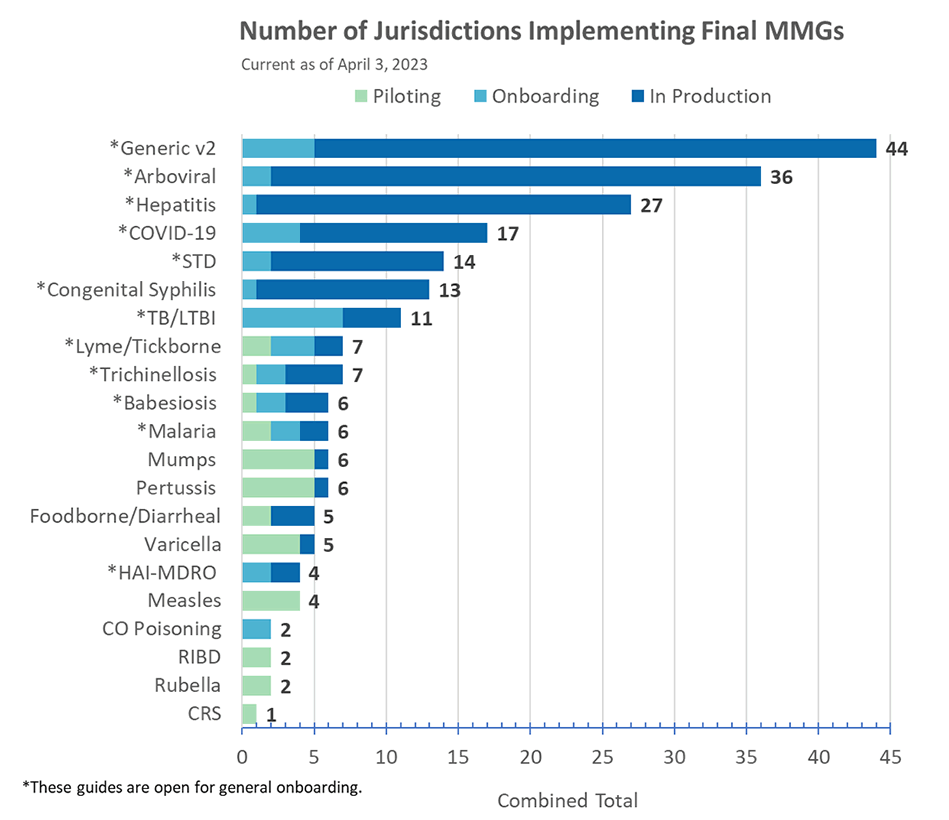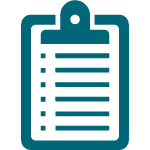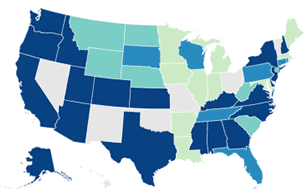April 2023
April 18, 2023, 3:00–4:00 PM ET: April eSHARE Webinar: “The NIOSH Industry and Occupation Computerized Coding System (NIOCCS) Tool: Automated Coding of Occupational Health Data.”
June 25–29, 2023: 2023 Council of State and Territorial Epidemiologists (CSTE) Annual Conference in Salt Lake City, UT. Register for the conference.

Modernizing the coding of occupational health data
CDC’s National Institute for Occupational Safety and Health (NIOSH) developed the NIOSH Industry and Occupation Computerized Coding System (NIOCCS). NIOCCS is a free web-based application that converts industry and occupation text into standard numeric codes. Public health professionals can analyze their data accurately and faster using this application.
NIOCCS provides state, tribal, local, and territorial health departments with a modern solution to rapidly assess how people’s jobs impact their health and safety. By leveraging new technologies to streamline outdated approaches to coding occupation health data, NIOCCS is an important step toward modernizing public health data systems.
The need for standard codes
Surveys, case report forms, and other data sources may collect industry and occupation information by asking:
- “What kind of business or industry do you work in?”
- “What is your job, or what kind of work do you do?”
People may answer in a variety of ways. Nurses working in an emergency room may say:
- Their industry is “hospital,” “medical center,” or “VA hospital,” and
- Their occupation is a “nurse,” “registered nurse,” or “RN”
To analyze this information, the text descriptions must be converted to standard industry and occupation codes. These standardized codes are established by the U.S. government, and help researchers examine illnesses and injuries by specific jobs and industries. Learn more about standard industry and occupation codes.
| Responses to “What industry do you work in?” |
Census Industry Code |
North American Industry Classification System (NAICS) Code |
|---|---|---|
| Hospital | 8191 | 622110 |
| Medical Center | 8191 | 622110 |
| VA Hospital | 8191 | 622110 |
| Responses to “What kind of job do you do?” |
Census Occupation Code |
Standard Occupational Classification (SOC) Code |
|---|---|---|
| Nurse | 3255 | 29-1141 |
| Registered nurse | 3255 | 29-1141 |
| RN | 3255 | 29-1141 |
For the industry question, the three responses provided would receive the same industry code.
For the occupation question, the three responses provided would receive the same occupation code.
NIOCCS codes these for you.
An outdated, manual approach
Until now, few tools were available to electronically code industry and occupation text, a process referred to as “autocoding.” Researchers had to look up each industry and each occupation code. This process of manual coding was time-consuming and costly.
A modern, automated solution
NIOCCS uses autocoding and machine learning technologies to make it easier for public health professionals to use industry and occupation data. NIOCCS codes tens of thousands of records in minutes.
Want to code your jurisdictions’ industry and occupation data as you collect it?
Learn about adding the NIOCCS Web API to your data collection tool.
NIOCCS can be used several ways:
- Code a single record.
- Upload a file (this requires you to create a free, secure NIOCCS account).
- Code data as you collect it using the NIOCCS Web API (Application Programming Interface).
A valuable tool for jurisdictions
Public health jurisdictions, such as the Detroit Health Department and the Georgia Department of Public Health, have already had success using NIOCCS. Both jurisdictions use the NIOCCS Web API to code industry and occupation data as they collect it. Learn more about how other jurisdictions are using NIOCCS to modernize their occupational health data.
Want more information?
Contact the NIOCCS team if you have questions or need help coding industry and occupation data.
Check out other NIOSH resources for collecting and using industry and occupation data and learn how NIOCCS has been used to inform public health action:
- Collecting and Using Industry and Occupation Data | NIOSH | CDC
- Using BRFSS to Assess Workers’ Health | NIOSH | CDC
- CDC – NIOSH Industry and Occupation Computerized Coding System (NIOCCS) – About
- eNews: Volume 18, Number 10 (February 2021) | NIOSH | CDC
Blogs
- Collecting Occupation and Industry Data in Public Health Surveillance Systems for COVID-19 | Blogs | CDC
- Making Industry and Occupation Information Useful for Public Health: A guide to coding industry and occupation text fields | Blogs | CDC
- 100 Million and Counting! | Blogs | CDC
- New Data Available! Assess Causes of Death by Industry and Occupation | Blogs | CDC
- How Collecting and Analyzing COVID-19 Case Job Information Can Make a Difference in Public Health | Blogs | CDC
Now available: 2023 NNDSS case definitions and other surveillance resources
On March 3, 2023, the NNDSS team posted the updated case definitions for the following nationally notifiable conditions:
- animal rabies,
- Candida auris,
- carbapenemase-producing organisms (CPO),
- coccidioidomycosis,
- COVID-19,
- gonorrhea,
- lead in blood, and
- melioidosis.
The team also released the newly created case definitions for standardized surveillance of:
- multisystem inflammatory syndrome in children (MIS-C) associated with SARS-CoV-2 infection, and
- strongyloidiasis.
The mpox case definition was implemented on August 1, 2022.
In addition to posting the latest case definitions for 2023, the NNDSS team also posted key resources for case surveillance in 2023, including the first release of the 2023 event code list and a list of 2023 nationally notifiable conditions with links to the latest case definition for each condition.
Want to create the future of case surveillance?
CDC and the CSTE Data Standardization Work Group need your help to make case surveillance more efficient by standardizing data across the case surveillance ecosystem.
CSTE holds meetings of the Data Standardization Work Group the last Friday of each month at 1:00 PM ET.
The next eSHARE webinar, titled “The NIOSH Industry and Occupation Computerized Coding System (NIOCCS) Tool: Automated Coding of Occupational Health Data,” will be held April 18, 2023, 3:00–4:00 PM ET.
To join an eSHARE webinar, please see your calendar invitation or contact edx@cdc.gov for login information with the subject line “eSHARE invitation.”
Although CDC has paused most disease-specific message mapping guide (MMG) development and onboarding efforts as part of modernizing case surveillance, we encourage jurisdictions to implement and onboard the generic version 2 (GenV2) and the tuberculosis/latent tuberculosis infection (TB/LTBI) MMGs.
Malaria MMG
The PHIN Vocabulary Access and Distribution System (VADS) Malaria Case Notification View version 6 is now available for the Malaria MMG version 1.0.2. This view updates the value set for Travel Reason (Malaria) to version 4 by adding 10 additional values and deprecating one.
Congratulations to the following jurisdictions for being in production as of April 3!
- Michigan for Arboviral v1.3 MMG
- Mississippi for COVID-19 MMG
- Washington State and Washington, D.C. for GenV2 MMG
Coming soon: name change for NETSS year-to-date folder
The CDC NNDSS team is updating the folder name of where jurisdictions using the National Electronic Telecommunications Surveillance System (NETSS) record layout to transmit case data to CDC upload their year-to-date (YTD) files for processing. This change will make the folder name distinct from the folder for weekly data. It will help jurisdictions avoid uploading weekly data files into the folder for YTD data files, which unintentionally deletes cases.
The “YTD” folders are found within the “NETSS EPI upload,” “NETSS STD upload,” and “NETSS VPD upload” directories in the CDC Secure Access Management System (SAMS). In the coming weeks, CDC will rename the “YTD” folders in each of these directories to “CAUTION_YTD_Full_Year_Files_Only.” Jurisdictions can view these directories based on their assigned permissions.
Learn more about NETSS YTD file processing in the help section of the Message Validation, Processing, and Provisioning System (MVPS).
If you have questions about this change, please contact your jurisdiction’s NNDSS Surveillance Officer listed below:
- Alan Schley (aso7@cdc.gov): AZ, DC, DE, KY, MT, NJ, NY, OH, OK, SD, UT, WI, U.S. territories
- Courtney Cook (uns6@cdc.gov): CO, FL, HI, IA, MD, MN, ND, NM, NV, RI, SC, WA, WV
- Diana Onweh (onw1@cdc.gov): AR, CT, GA, ID, IL, IN, LA, MI, MS, NH, PA, TN, TX, WY
- Keaton Hughes (qwy4@cdc.gov): AK, AL, CA, KS, MA, ME, MO, NC, NE, NYC, OR, PR, VA, VT







